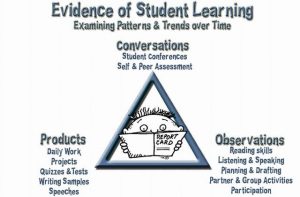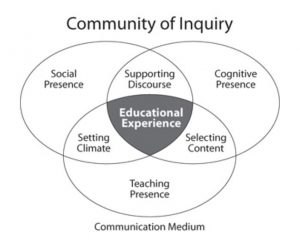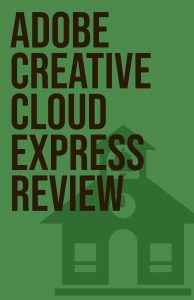ELA B30 (Hamlet)
Mr. Scott Sully
McNaughton High School
Moosomin, SK
Rationale
Hey everyone! Here goes nothing! Happy Reading…
My goal is creating this course is to make something that is flexible and easy to access for students. Previously, in my experience with LMS programs so far, I have found a lack of student engagement and follow through on my end. With that in mind I believe that a blended hybrid model that utilizes a flipped classroom pedagogy will best serve my needs. I also plan to take advantage of several of my weaknesses within assessment and format as I develop this course.
I have chosen to design my blended course for ELA B30, with a focus on the study of Hamlet by William Shakespeare. I have chosen to do this as I am beginning this semester teaching this class and in a couple of months, I will be getting to this unit. This will give me time to better get to know my class and design the content to be more specific to their needs. It will also give me a chance to utilize more blended strategies and grow my skillset with a classic text that I know well.
Target Student Population & Demographics
My target audience for this course are Grade 12 students between the ages of 16-18. There are two sections of this course offered each year in our school. The courses are taught by different teachers’ teacher but the content for the course is co-planned.
Our Grade 12 class is split into two home rooms at the beginning of each school year and that is how it is determined which ELAB30 class they will belong to. This split is meant to make each class equal in terms of academics and mitigate potential behavioral issues.
Although designing this course for my current class, within my Grade 12 ELA classes, there are often several constants in the classroom makeup and demographics:
-Several EAL learners at different stages
-A modified ELA B31 student within the class
-Student on an IEP
-A Group of students that have been together most of their academic career (Rural Community)
-Range of academic abilities and learning styles
Course Format
I want to design a course that is flexible, easy to access, and can be equally effective for students when they are working at home or are in the classroom. With that being said, I do not want to create a blended component that only comes into use when students are away from the classroom. I want my blended components to be equally important when students are face-to-face. With this goal in mind, I believe that a Blended (Hybrid) model utilizing Flipped Learning as a pedagogical approach will be most effective.
In the article, “The Landscape of Merging Modalities” by Valerie Irvine, Hybrid learning is shown to be flexible and requires students to participate in both face-to-face and online components of a course. This approach will be well suited to the schedule of the high school classroom. Utilizing this model combined with flipped classroom pedagogies will allow me to accomplish my goal of having the blended components of my course valued and used daily.
I am hoping to focus primarily on the study of Hamlet by William Shakespeare for my online course design. This is a topic I am very familiar with but have always taught in a very traditional manor, only utilizing blended learning strategies within the classroom. This study will allow me to effectively use Flipped Learning to enrich student experience. The course format will have students study the text and watch the play outside of the classroom to better utilize instructional time during the day. The hybrid model will allow me to provide students with supports and material to facilitate their flipped lessons. Class time can then be focused on inquiry and deeper understanding.
Course Toolset
LMS – Canvas – I am very excited to design my course using Canvas. This platform will provide me with opportunities to organize modules, create assessment, and post content that I am currently unable to do with our current LMS. I am sure there will be a steep learning curve but I am ready for the challenge!
Zoom – This will be used for communication and video conferencing with my students as needed within the course. I would like to create a presentation style assessment using Zoom as well. When we went online, I had great success with students presenting or leading in this format.
Edsby- Our school division uses EDSBY for gradebooks, attendance, report cards, and parent communication. This program has been effective in its purpose I would like to include it in this course as it is also required for any courses I teach. I am interested to see if this program can better be integrated with other LMS and tools I will use in my blended learning. Parent communication is also crucial to student achievement, this program makes it easy for me to communicate with students’ parents.
Other Resources – YouTube, Jamboard, EdPuzzle, No Fear Shakespeare, Hamlet specific resources
I intend to lean heavily on Canvas for much of my content and assessment because I am excited to learn a more intuitive LMS than is currently used in my school division. As my course develops, and with the support of my classmates, I am sure that I will come across many more tools for my toolset.
Course Content & Learning Objectives
This unit will connect and be evaluated using most of the outcomes for ELA B30 but I would like to place an emphasis on the Assess & Reflect outcomes. This is an area I struggle with assessing and want to take this opportunity to develop strategies to do them justice. I believe that using blended learning strategies and the Canvas LMS, I will be able to create opportunities for effective peer editing and self-reflection for students. This will be a major focus as I construct my course.
| CRB30.1
View, listen to, read, comprehend, and respond to a variety of grade-appropriate international, including indigenous, texts that address:
- identity (e.g., Sense of Self)
- social responsibility (e.g., Social Criticism), and
- social action (agency) (e.g., Addressing the Issues).
|
CC B30.1
Create a range of visual, multimedia, oral, and written texts that explore:
- identity (e.g., Sense of Self)
- social responsibility (e.g., Social Criticism), and
- social action (agency) (e.g., Addressing the Issues).
|
| CRB30.2
View, comprehend, and evaluate critically a variety of visual and multimedia texts by international, including indigenous, artists and authors from various cultural communities, and identify how the texts address beliefs, values, and power. |
CC B30.2
Create a visual or multimedia presentation that suits the topic, purpose, and audience; teaches others about a global social issue; and persuades them to act on the issue in a responsible manner. |
| CR30.3
Listen to and comprehend grade-appropriate informational and literary texts created by international, including indigenous, speakers and authors, and analyze the perspectives, biases, beliefs, values, identities, and power presented in each text. |
CC B30.3
Create and defend an informed critical response to a global issue in formal (including a workshop presentation, a debate, and an oral reading of poetry or a prose passage related to the issue) and informal (including discussion and collaborative group work) situations. |
| CR30.4
Read and demonstrate comprehension of a range of contemporary and classical grade-appropriate informational (including position papers, magazine and newspaper articles, and electronic communications) and literary (including drama, novels, poetry, short stories, essays, biographies, and autobiographies) texts from various international, including indigenous, cultures and analyze the philosophical, ethical, and social influences that have shaped information, issues, characters, plots, and themes. |
CC B30.4
Compose and create narrative, descriptive, expository, and persuasive writings that include a position paper, a comparative essay, a letter of inquiry, a critique of an author’s style, and a short story or essay that uses parody, satire, and/or irony. |
| AR B30.1
Assess own and others’ work for precision, clarity, and artistry. |
AR B30.2
Reflect on and assess understanding of self as a self-directed, self-appraising, and strategic learner. |
Assessment Strategies

Our school division uses a triangulation of student evidence as the foundation for how teachers design their assessment. The blended classroom with flipped lesson design will give me and opportunity to assess observations and conversations in different ways. In this area, I am also trying to improve upon an area of weakness in my assessment. I feel comfortable and confident creating assignments and marking students’ products but do not feel that I give students enough opportunities in the other areas. Some ideas I have for observation and conversation include:
-Recorded chapter summaries following assigned reading/viewing
-Facilitate group discussions using Zoom
-Create a community on Discord or Twitter for students to share information/content from the course
-Observe the time spent by students in their flipped lessons
I am willing to take any new suggestions here as well! ? haha
Considerations for Common Concerns
I am sure many other concerns will arise along this journey, but these are several that need some early attention and thought before getting started.
Technology – Not all students have equal access to technology outside of the school. In creating my course, I will need to make sure I can get students access to technology or design the flipped lessons to be able to be done offline. Students may also be able to do some portions of the flipped lesson in the classroom without falling too far behind as well.
Modified Students – I will have one student on a modified ELA B31 curriculum while I am implementing my new blended course design. This will require me to also run a modified flipped lesson unit alongside this course to effectively manage my classroom during the school day.
Attendance & Participation Online – The main concern I have for this course is online participation and student engagement. I can encourage participation through quizzes, online monitoring, and effective module designs that students are able to complete and access effectively.
EAL Students – Support for EAL students will need to be considered for flipped lessons. This may include simplified texts, google translate, and any other programs that may help to support these learners.
Looking forward to hearing form all of you!!
Scott


